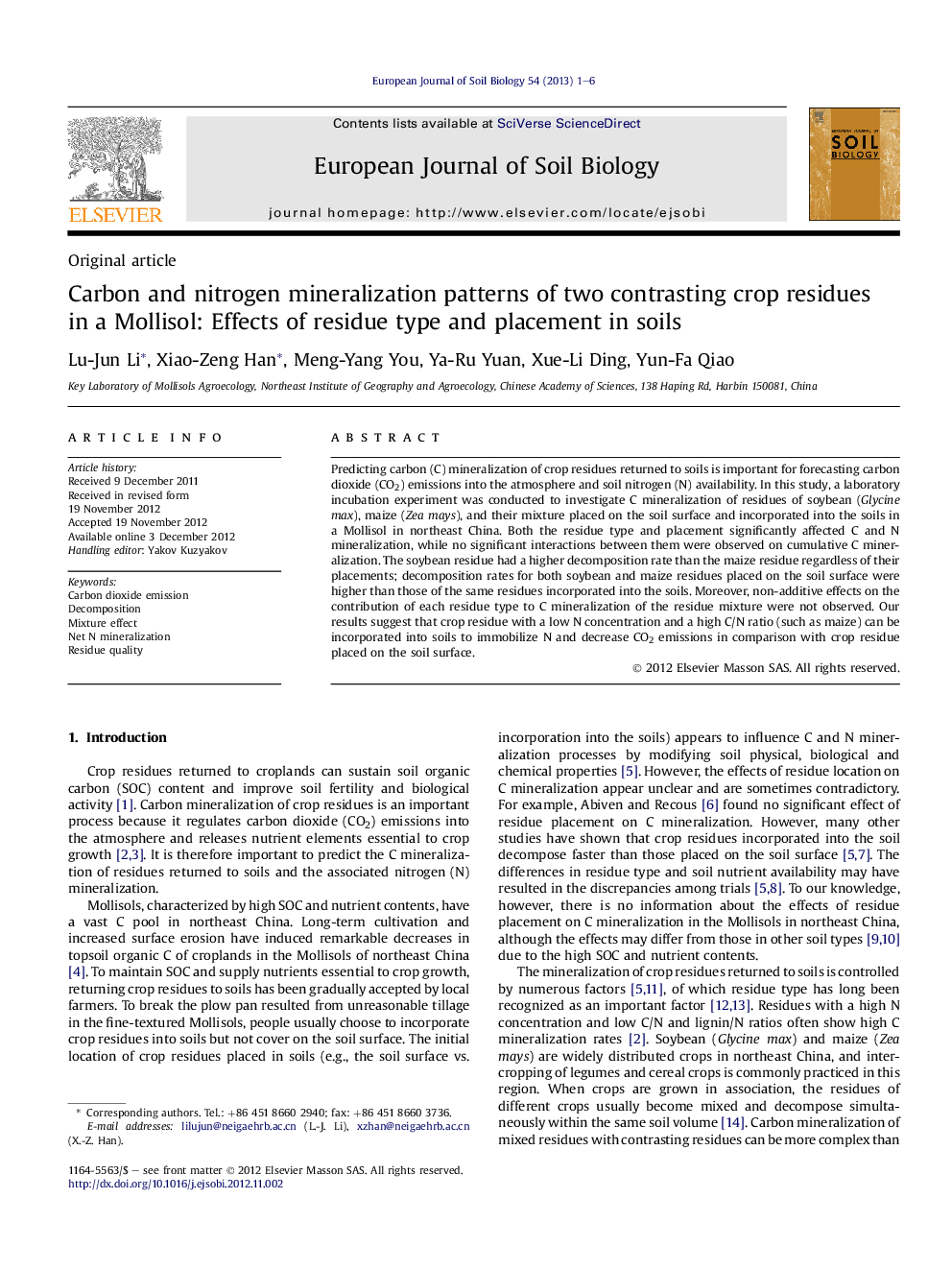| Article ID | Journal | Published Year | Pages | File Type |
|---|---|---|---|---|
| 4391943 | European Journal of Soil Biology | 2013 | 6 Pages |
Predicting carbon (C) mineralization of crop residues returned to soils is important for forecasting carbon dioxide (CO2) emissions into the atmosphere and soil nitrogen (N) availability. In this study, a laboratory incubation experiment was conducted to investigate C mineralization of residues of soybean (Glycine max), maize (Zea mays), and their mixture placed on the soil surface and incorporated into the soils in a Mollisol in northeast China. Both the residue type and placement significantly affected C and N mineralization, while no significant interactions between them were observed on cumulative C mineralization. The soybean residue had a higher decomposition rate than the maize residue regardless of their placements; decomposition rates for both soybean and maize residues placed on the soil surface were higher than those of the same residues incorporated into the soils. Moreover, non-additive effects on the contribution of each residue type to C mineralization of the residue mixture were not observed. Our results suggest that crop residue with a low N concentration and a high C/N ratio (such as maize) can be incorporated into soils to immobilize N and decrease CO2 emissions in comparison with crop residue placed on the soil surface.
► Both residue type and placement significantly affected C and N mineralization. ► No significant interaction between residue type and placement was observed on C mineralization. ► Soybean had a higher residue decomposition rate than maize regardless of their placements. ► Residue decomposition rate was higher on soil surface than that incorporated into the soils. ► There was an additive effect on contribution of each residue to C mineralization of residue mixture.
